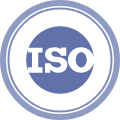Good manufacturing practices for investigational products
Good manufacturing practices for investigational products 临床试验用药品 GMP 指南
1. Background 背景
1.1. In view of an old publication date,and the recent need for new guidelines arising from inspections carried out forCOVID-19 therapeutics, the World Health Organization (WHO) PrequalificationTeam-Inspection Services (PQT INS) raisedthe urgency for a revision of the WHO Good manufacturing practices forinvestigational pharmaceutical products for clinicaltrials in humans (1). The Fifty-fifth Expert Committee on Specifications forPharmaceutical Preparations (ECSPP) concurred with this proposal.
由于旧版本发布日期较早,最近对 COVID-19 疗法进行检查时有了新的指南需求,WHO 预认证小组—检查服务(PQTINS)提出了修订 WHO 人用临床试验用药品 GMP 的紧迫性。ECSPP第 55 次会议同意了该建议。
1.2. The objective of this update is tobring the guideline in line with current expectations and trends in goodmanufacturing practices and to harmonize the text with the principles fromother related international guidelines.
本次更新的目的是使得指南与当前 GMP 要求和趋势相一致,并在内容上与其它相关国际指南的原则保持一致。
2. Introduction 概述
2.1. Investigational products are used fortesting purposes; as a reference in a clinical trial; for an unauthorizedindication; and to gain further information about the authorized form.
临床试验用药品用于测试目的,作为临床试验中的参比,用于未经批准的适用症,获得关于批准剂型的更多信息。
2.2. In some cases, marketed products whichhave been re-packaged or modified in some way, are used for investigationalpurposes.
在有些情况下,经过重新包装或某种方式改装的已上市药品亦会被用作临床试验。
2.3. The legal status of investigationalproducts for human and veterinary use varies from country to country.
人用和兽用临床试验药品的法律状态在不同国家有所不同。
2.4. These products are sometimes notcovered by legal and regulatory provisions in the areas of good practices (GxP)and inspection. These complexities, such as lack of high level goodmanufacturing practices (GMP) requirements, risk of contamination andcross-contamination, clinical trial designs, blinding and randomization,increase the risk. In addition, there are also instances where there isincomplete knowledge of the potency and toxicity of the investigationalproduct.
这些药品有时不受 GXP 和检查法律和法规条款监管。这些复杂性,如缺少高层次 GMP 要求、污染和交叉污染风险、临床试验设计、设盲和随机分配,更增加了风险。此外,有时临床试验用药品的效价和毒性知识亦不完整。
2.5. There are further risks associatedwith the production, validation, control, shipping, storage and use ofinvestigational products.
在临床试验药品的生产、验证、检验、运输、存贮和使用中还存在其它风险。
2.6. To minimize risks and to ensure thatthe results of clinical trials are unaffected by inadequate safety, quality orefficacy arising from unsatisfactory manufacture, investigational productsshould be manufactured and managed in accordance with an effective qualitymanagement system and the recommendations contained in this guideline.
为了尽可能降低风险,确保临床试验的结果不受因生产情况不够好而引导起的安全性不足、质量或有效性不足的影响,临床试验药品应按有效的质量管理体系和本指南中的建议进行生产和管理。
2.7. Other guidelines and GxP should betaken into account, where relevant and as appropriate, as to the stages ofdevelopment, production and control of the product.
在产品开发,生产和控制阶段应酌情考虑其他准则和 GxP。
2.8. Proceduresshould be flexible to provide for changes whenever necessary, as knowledge ofthe process increases over time, and in accordance with the stages ofdevelopment of the product.
程序应灵活,以便在必要时进行修改,因为对工艺的了解会随时间推移而增加,并且应符合产品开发的阶段。
2.9. Investigational products should bemanufactured in a manner:
临床试验用药品应按以下方式生产:
-
thatis compliant to GxP, as appropriate;
-
符合 GXP 要求(适当时)
-
thatensures that subjects of clinical trials will be protected from poor qualityproducts due to unsatisfactory manufacturing;
-
确保临床试验对象受到保护,不会使用因生产不足导致的劣质药品
-
toassure consistency between and within batches of the investigational product;and
-
确保临床试验用药品批内和批间一致性,以及
-
toassure consistency between the investigational product and the futurecommercial product.
-
确保临床试验药品和未来商业化药品之间的一致性
2.10. The selection of an appropriate dosageform for clinical trials is important. While it is accepted that the dosageform may be very different from the anticipated final formulation (e.g. acapsule instead of a tablet) in early trials, in the pivotal Phase III studies,it should be similar to the projected commercial presentation; otherwise thesetrials will not necessarily prove that the marketed product is both efficaciousand safe. If there are significant differences between the clinical andcommercial dosage forms, data should be submitted to the registrationauthorities to demonstrate that the final dosage form is equivalent, in termsof bioavailability and stability, to that used in the clinical trials.
选择适当的剂型用作临床试验是很重要的。虽然在早期临床中可以使用与最终剂型差异很大的剂型)例如,使用胶囊而不是片剂),但是在三期临床研究中,剂型应与商业化规格相似,否则这些试验可能无法证明上市药品具有有效性和安全性。如果临床试验用剂型与商业化剂型差异很大,则应向注册机构提交数据证明最终剂型在生物利用度和稳定性方面与临床试验所用剂型是一致的。
2.11. Thequality of investigational products should be appropriate. For example, dosageforms in Phase III clinical studies should be characterized and assured at thesame level, as for routinely manufactured products.
临床试验用药品的质量应适当。例如,三期临床的剂型应按常规生产药品要求进行表征,得到相同水平的保障。
2.12. Where production and/or quality controlis transferred from one site to another, the recommendations in the guidelinefor transfer of technology should be followed.
如果生产和/或质量控制要从一个场所转移至另一个场所,则应遵守技术转移指南中的建议。
2.13.This document should be read inconjunction with other WHO GxP guidelines, including good clinical practice(GCP) (2).
本文件应与 WHO 的 GXP 指南(包括优良临床规范(GCP))一起解读。
3. Scope 范围
3.1. The recommendations in this guidelineare applicable to investigational products for human and veterinary use.
本指南的建议适用于人用和兽用临床试验药品。
3.2. Although the focus is on medicinal(pharmaceutical) products, some of the principles may be applied to otherinvestigational products.
虽然关注的是药品,但有些原则亦可用于其它临床试验用产品。
4. Quality management 质量管理
4.1. There should be a comprehensivelydesigned, clearly defined, documented and correctly implemented quality managementsystem in place. Senior management should assume responsibility for this aswell as the quality of the investigational product.
应具备经过全面设计的、规定明确的、有文件记录的质量管理体系并正确实施之。高级管理人员应承担此责任,以及临床试验药品的质量责任。
4.2. All parts of the quality system shouldbe adequately resourced and maintained.
质量体系的所有部分均应具备足够的资源并得到维护。
4.3. The quality system should incorporateGxP which would be applied to all the lifecycle stages of the products,including the transfer of technology, and the interface between the manufactureand the trial site (e.g. shipment, storage, labelling).
质量体系应包括准备应用于产品所有生命周期阶段的 GXP,包括技术转移,以及生产和试验场所之间的交接(例如,运输、存贮和标签)。
4.4. The quality system should ensure that:
质量体系应确保:
-
productsare designed and developed in accordance with the requirements of this documentand other associated guidelines such as good laboratory practice (GLP) (3), good clinical practice (GCP) (2)and good storage and distributionpractices (GSDP)(4), whereappropriate;
-
产品根据本文件和其它相关指南如 GLP、GCP 和GSDP(适当时)的要求设计和起草
-
managerialresponsibilities are clearly specified in job descriptions;
-
在岗位职责中清楚写明了管理职责;
-
operationsare clearly specified in a written form;
-
以书面形式清楚规定了操作内容;
-
arrangementsare made for the manufacture, supply and use of the correct starting andpackaging materials;
-
为生产、供应和使用正确的起始物料和包装材料做出安排
-
allnecessary controls on starting materials, intermediate products, bulk productsand other in-process controls should be in place;
-
应对起始物料、中间体、散装产品和其它中间控制制订必要的控制
-
calibrationsand validations are carried out where necessary;
-
进行校正和验证(必要时)
-
thefinished product is correctly processed and checked according to the definedprocedures;
-
成品根据既定程序正确加工和检查
-
deviations and changes areinvestigated and recorded with an appropriate level of root cause analysis doneand appropriate corrective actions and/or preventive actions (CAPAs) identifiedand taken;
-
偏差和变更有调查和记录,有恰当水平的根本原因分析,识别并采取恰当的 CAPA
-
thereis a system for quality risk management (5); and
-
订有质量风险管理体系,以及
-
satisfactoryarrangements exist to ensure, as far as possible, that the investigationalproducts are stored, distributed and subsequently handled so that their qualityis maintained.
-
订有足够好的程序,可尽可能确保临床试验用药品在存贮、销售和后续处理过程中能维持其质量
5. Quality risk management 质量风险管理
5.1. There should be a system for qualityrisk management.
应具备质量风险管理体系。
5.2. The system for quality risk managementshould cover a systematic process for the assessment, control, communicationand review of risks to the quality of the product and, ultimately, to theprotection of the trial subject and patient.
质量风险管理体系应覆盖对产品质量风险的系统性评估流程、控制、沟通和审核,并最终保护试验对象和患者。
5.3. The quality risk management systemshould ensure that:
质量风险管理体系应确保:
theevaluation of the risk is based on scientific knowledge and experience with theprocess and product;
基于科学知识和工艺与产品经验对风险进行评估;
proceduresand records for quality risk management are retained; and the level of effort,formalityand documentation of the quality risk management process is commensurate withthe level of risk.
保存质量风险管理程序和记录,质量风险管理流程工作的水平、正式程度以及文件记录水平应与风险水平相称
5.4. Quality risk management should beapplied both proactively and retrospectively, when appropriate.
应提前和回顾性(适当时)地应用质量风险管理。
6. Personnel 人员
6.1. There should be a sufficient number ofappropriately qualified personnel available to carry out all the tasks forwhich the manufacturer of investigational products is responsible.
应有足够数量的经过恰当的资格确认的人员执行临床试验药品生产商所负责的工作。
6.2. Individual responsibilities should beclearly defined, recorded as written descriptions and understood by the personsconcerned.
个人职责应有明确规定,形成书面说明,并且相关人员应了解其职责。
6.3. A designated person, with a broadknowledge of product development and clinical trial
processes should ensure that there aresystems in place that meet the requirements of this guideline and other relevantGxP guidelines.
委任的人员应具备产品开发和临床试验的广泛知识,确保具备符合本指南和其它相关 GXP 指南要求的体系。
6.4. Personnelinvolved in the development, production and control of investigational productsshould be appropriately trained in relevant GxP and the requirements specificto investigational products.
参与临床试验用药品开发、生产和检测的人员应经过相关 GXP和临床试验用药品专用要求的适当培训。
6.5. Production and quality controloperations should be carried out under the control of clearly identifiedresponsible persons who are separately designated and independent, one from theother.
生产和质量控制应由明确指定的负责人控制。两人应相互独立,分开指派。
7. Documentation 文件记录
7.1. Good documentation is an essentialpart of a quality management system. Documents should be appropriatelydesigned, prepared, reviewed and distributed. They should also be appropriatefor their intended use.
优良文件记录是质量管理体系的基石。文件记录应经过适当设计、起草、审核和分发,亦应适合于其既定用途。
7.2.Documents should be approved, signedand dated by the appropriate responsible persons. No authorized document shouldbe changed without the prior authorization and approval of another.
文件应由适当的负责人批准、签名/日期。经过批准的文件没有得到再次授权和批准之前不得修改。
Specifications 质量标准
7.3. Specifications (for startingmaterials, primary packaging materials, intermediate, bulk and finishedproducts) should be available.
应有质量标准(起始物料、内包材、中间体、散装和成品)。
7.4. In developing specifications,attention should be paid to the characteristics which affect the efficacy andsafety of products, namely:
在拟订质量标准时,应注意影响药品有效性和安全性的特性,即:
-
theaccuracy of the therapeutic or unitary dose: homogeneity, content uniformity;
-
治疗或单位剂量的准确性:均匀性、含量均一性;
-
therelease of active ingredients from the dosage form: dissolution time, etc.;
-
活性成分从制剂中释放情况:溶出时间等
-
thepackage size should be suitable for the requirements of the trial, whereapplicable;
-
包装规格应适合于试验要求(适用时);
-
theestimated stability, if necessary, under accelerated conditions; and
-
预估的加速稳定性(必要时)以及
-
thepreliminary storage conditions and the shelf life of the product.
-
药品的初步存贮条件和货架期
7.5. As a result of new experience in thedevelopment of an investigational product, specifications may be changed byfollowing a documented procedure. Changes should be authorized by a responsibleperson. Each new version should take into account the latest data andinformation, current technology, regulatory and pharmacopoeia requirements.There should be traceability of the previous version(s). The reasons forchanges should be recorded. The impact of the change on any on-going clinicaltrials, on product quality, stability, bio-availability, and bio equivalence(where applicable) should be considered.
由于临床试验药品在开发过程中会获得新的经验,质量标准可能会按书面程序进行变更。变更应由负责人员批准。每个新版本均应考虑最新数据和信息、现行技术、法规和药典要求。之前的版本应可追溯,应记录变更理由。应考虑变更对所有正在进行的临床试验、药品质量、稳定性、生物利用度和生物一致性(如适用)。
Order 指令
7.6. An order should be available for therequest of a certain number of units for processing, packaging, storage andtheir shipping.
在要求对一定数量单位药品进行加工、包装、存贮和运输时应有指令。
7.7. The order should be given by thesponsor to the manufacturer of an investigational product.
指令应由申办人发给临床试验用药品的生产商。
7.8. The order should be in writing (e.g.by paper or electronic means), be authorized and contain sufficient detailincluding the approved product specification file (see below) and the relevantclinical trial protocol, as appropriate, to avoid any ambiguity.
指令应为书面(例如,纸质或电子方式),经过批准,其中包括有足够的详细信息,包括经过批准的药品质量标准文件(见下)和相关临床试验方案(适当时)以避免任何混淆。
7.9. Where commercially available productsare obtained to be used as reference products, such as for use inbio-equivalence studies, the relevant documentation, such as a purchase order,an invoice, storage and transport records, should be maintained and availablefor inspection.
如果要使用商业可及药品作为参比药品,如用于生物等效性研究,则相关文件记录如采购订单、发票、存贮和运输记录均应保存备查。
Product specification file(s) 产品标准文件
7.10. A product specification file (or files)should contain the information necessary to prepare detailed writteninstructions on processing, packaging, quality control testing, batch release,storage conditions and/or shipping.
药品标准文件应包括有准备详细的加工、包装、质量检测、批放行、存贮条件和/或运输方面书面指导书所需的信息。
7.11. The product specification file shouldindicate who has been designated or trained as the designated responsibleperson(s) for the release of batches.
药品标准文件应说明指定了何人或培训了何人作为委派的批放行负责人。
7.12. The product specification file should becontinuously updated while, at the same time, ensuring appropriate traceabilityto the previous version(s).
药品标准文件应保持更新,同时确保对之前版本的适当追溯性。
7.13. The information should form the basis forassessment of the suitability for certification and release of a particularbatch by the designated responsible person. It should include or refer to thefollowing documents:
这些信息应成为被指定负责人认证和放行特定批次的适用性评估基础。其中应包括或索引至以下文件:
-
specificationsfor starting materials, packaging materials, intermediate, bulk and finishedproduct;
-
起始物料、包装材料、中间体、散装和成品标准
-
analyticalmethods for starting materials, packaging materials, intermediate, bulk andfinished product;
-
起始物料、包材、中间体、散装和成品分析方法
-
manufacturingmethods;
-
生产方法
-
in-processtesting and methods;
-
中控检测项目和方法
-
approvedlabel;
-
经过批准的标签
-
relevantclinical trial protocols;
-
相关临床试验方案
-
randomizationcodes, as appropriate;
-
随机代码(适当时)
-
relevanttechnical agreements, as appropriate;
-
相关技术协议(适当时)
-
stabilitydata; and
-
稳定性数据,以及
-
storageand shipment conditions.
-
存贮和运输条件
Note: The contents will vary depending on the product andstage of development.
注:文件内容可能会根据产品和开发阶段不同而不同。
Manufacturing formulae and processing instructions 生产配方和加工指令
7.14. Normally, detailed manufacturingformulae, processing and packaging instructions and records should beavailable. Where this is not possible, other clear, written instructions andwritten records should be available for every manufacturing operation orsupply.
一般来说,应有详细的生产配方、加工和包装指令和记录。如果不可能得到,则应为每个生产操作或供应操作提供其它的明确的书面指令和书面记录。
7.15. As a result of new experience in thedevelopment of an investigational product, manufacturing formulae andprocessing instructions may be changed by following a documented procedure.Each new version should take into account the latest data and information,current technology, regulatory and other requirements. There should be traceabilityto previous versions. The reasons for changes should be recorded. The impact ofthe change on any on-going clinical trial, product quality, stability,bio-availability and bio equivalence (where applicable) should be considered.Changes should b e authorized by a responsible person.
由于临床研究药品在开发中会获得新的经验,生产配方和加工指令可能会根据文件程序进行变更。每个新版本均应考虑最新数据和信息、现行技术、法规和药典要求。之前的版本应可追溯,应记录变更理由。应考虑变更对所有正在进行的临床试验、药品质量、稳定性、生物利用度和生物一致性(如适用)。
7.16. These records should be used whenpreparing the final version of the documents to be used in routine manufacture.
在起草最终版本文件用于常规生产时应使用这些记录。
7.17. Batch processing and packaging recordsshould be retained for at least two years after the termination ordiscontinuance of the clinical trial, or after the approval of theinvestigational product.
批加工和包装记录应保存至临床试验结束或中止之后,或者临床试验药品被批准之后至少 2 年。
7.18. Wherethe data are intended for inclusion in an application for product registration(marketing authorization) purposes, the records should be maintained until theend of the life cycle of the product.
如果数据要放在药品注册申报资料中(上市许可),则记录应保存直到药品生命周期结束。
Packaging instructions 包装指导
7.19. The number of units to be packaged shouldbe specified before the start of the packaging operation. This should includethe number of units necessary for carrying out quality controls and the numberof samples from each batch used in the clinical trial to be kept as retentionsamples. Reconciliation should be carried out at defined intervals, whererequired, and at the end of the packaging and labelling process.
应在开始包装操作之前指定要包装的单位数量。其中包括进行QC 检测所需的单位数量,以及临床试验所用各批次中抽样后作为留样的数量。应按规定的时间进行数量衡算(必要时),并在包装和贴标过程结束之后进行数量衡算。
7.20. Investigational products may be packed inan individual way for each subject included in the clinical trial, or as bulkif required.
临床研究用药品可为临床试验中的每个对象单个包装,亦可按要求散装。
Labelling instructions 贴标指令
7.21. Investigational products should belabelled in accordance with relevant legislation or best practices. The labelshould contain information such as:
临床研究用药品应根据相关法规或最佳规范进行标示。标签应包括信息如:
-
thename, address and telephone number of the sponsor, contract researchorganization or investigator;
-
申办人、合同研究机构或研究员的名称、地址和电话号码;
-
thestatement: "For clinical research use only";
-
声明“仅供临床研究使用”;
-
areference number indicative of the trial, site, investigator and sponsor, ifnot given elsewhere;
-
试验适用症索引号、试验场所、研究员和申办人,如果在其它地方未给出;
-
abatch or code number;
-
批号或代码;
-
thetrial subject or patient identification number;
-
试验对象或患者编号;
-
areference to the directions for use;
-
对使用指导的索引;
-
informationon storage conditions;
-
存贮条件的信息;
-
anexpiry date, use-by date or re-test date (month and year);
-
有效期,最后使用日期或复验期(年月)
-
adosage form and route of administration;
-
剂型和给药途径;
-
thequantity of dosage units and, in the case of open trials, the name/identifierand strength/potency; and
-
给药单位的数量,如果是开放式试验,则为名称/标识和剂量/效价,以及
-
thestatement: “Keep out of reach of children”.
-
声明“放在儿童接触不到的地方”
7.22. Additional information may be displayedin accordance with the order (e.g. treatment period, standard warnings).
可能需要根据订单显示其它信息(例如,处理时间,标准警告)
7.23. When necessary for blinding purposes, thebatch number may be provided separately (see also "Blindingoperations").
如果是设盲所需,则可以单独提供批号(参见“设盲操作”)。
7.24. A copy of each type of label should bekept in the batch packaging record.
每类标签应保留一张副本在批包装记录中。
7.25. The address and telephone number of themain contact for information on the product, clinical trial and for emergencyunblinding need not appear on the label where the subject has been given aleaflet or card which provides these details and who has been instructed tokeep this in their possession at all times.
如果向受试对象提供了说明书或卡片,在上面写明了相关详细信息,并要求受试对象保留该信息,则产品信息、临床试验和紧急揭盲的主要联系人电话号码和地址不需出现在标签上。
7.26. Particulars should appear in the officiallanguage(s) of the country in which the investigational medicinal product is tobe used.
详细信息应采用临床试验药品准备使用的国家的官方语言出现。
7.27. Where all the required information cannotbe displayed on primary packaging, secondary packaging should be providedbearing a label with those particulars. The primary packaging shouldnevertheless contain information such as the name of sponsor, contract researchorganization or investigator; route of administration; batch and/or codenumber; trial reference code and the trial subject identification number.
如果在内包装上无法显示所有需要的信息,则外包装应有标签写明这些信息。内包装仍应含有一些信息如申办人名称、合同研究机构或研究员名称,给药途径,批号和/或代码,试验索引号和试验对象编号。
7.28. Symbols or pictograms may be included toclarify certain information. Warnings and/or handling instructions may bedisplayed.
可以使用符号或图标来说明特定信息。可以显示警告和/或处理指导。
7.29.If it becomes necessary to change theuse-by date, an additional label should be affixed to the investigationalmedicinal product. This additional label should state the new use-by date andrepeat the batch number. This labelling activity should be performed inaccordance with GMPprinciples, standard operatingprocedures and should be checked by a second person. This additional labellingshould be recorded in both the trial documentation and in the batch records.
如果有必要变更最迟使用日期,则应在临床试验用药品上加贴其它标准。该加贴标准应写明新的最迟使用日期,并重复写明批号。该贴标动作应根据 GMP 要求和 SOP 执行,并由第二人复核。该加贴标签动作应记录在试验文件和批记录中。
Batch manufacturing records 批生产记录
7.30. Processing, packaging and testing recordsshould be kept in sufficient detail for the sequence of operations to beaccurately traced. They should contain any relevant remarks which increase theexisting knowledge of the product, allow and reflect changes and improvementsin the manufacturing operations, and justify the procedures used.
加工、包装和检测记录应按操作顺序记录详细信息,可以准确追溯。记录中应包括有所有相关备注,这些备注增加了药品的现有知识,使用可以进行和反映出变更和改进生产操作,并说明所用程序的理由。
Coding (or randomization) systems 编号(或随机编号)系统
7.31. Procedures should be established for thegeneration, security, distribution, handling and retention of any randomizationcode used in packaging investigational products and code- break mechanisms. Theappropriate records should be maintained.
应为临床试验用药品包装中所用随机码的生成、安全保护、分发、处理和保存以及解码机制建立程序。
7.32. The coding system must permit thedetermination of the identity of the actual treatment product received byindividual subjects, without delay, in an emergency situation.
赋码系统必须能够使得在紧急情况下立即确定个人受试对象所收到的实际处理药品是什么。
8.Premises 设施
8.1. Premises, where investigationalproducts are manufactured, should be located, designed, constructed andmaintained to suit the operations to be carried out.
用于临床试验药品生产的设施其位置、设计、结构和维护应适合于所执行的操作。
8.2. The layout and design of premisesshould aim to minimize the risk of errors and mix-ups and permit effectivecleaning and maintenance in order to avoid contamination, cross-contaminationand, in general, any adverse effect on the quality of the products.
设施的平面布局和设计应尽可能降低错误和混淆的风险,能够执行有效清洁和维护,以避免污染、交叉污染,不会对药品质量产生不良影响。
8.3. Attention should be paid to lineclearance in order to avoid mix-ups.
应注意清场,避免混药。
8.4. Because the toxicity of some materialsmay not be fully known, cleaning is of particular importance. Validatedcleaning procedures should be followed in order to prevent cross-contamination. The visual inspection after cleaning, sampling and testprocedures should be appropriate and the acceptance limits used after cleaningshould be justifiable. Where cleaning agents are used, their selection shouldbe justifiable.
由于对有些物料的毒性可能并不完全了解,因此清洁应特别重要。应遵守经过验证的清洁程序,以避免交叉污染。在清洁之后进行目视检查、取样和检测程序应恰当,清洁后所用的可接受限度应可论证。如果使用了清洁剂,则其选择应可论证。
8.5. Where identified through riskassessment, campaign production should be considered. In other cases based onrisk, dedicated and self-contained facilities should be used.
如果通过风险评估认为可以接受,则可考虑采用周期生产方式。另一些情况下,如果有风险则应使用专用设施或封闭设施。
9. Equipment and utilities 设备和公用设施
9.1. Equipment and utilities should beselected, located, constructed and maintained to suit the operations to becarried out.
设备和公用设施的选择、定位、结构和维护应适合于其准备执行的操作。
9.2. The layout, design, installation anduse of equipment and utilities should aim to minimize the risk of errors andpermit effective cleaning and maintenance in order to avoid cross-contamination, a build-up of dust or dirt and, in general, any adverse effecton the quality of products.
设施和公用设施的平面布局、设计、安装和使用应尽可能降低犯错的风险,使得可以执行有效清洁和维护,以避免交叉污染、灰尘和脏物累积,总体来说,避免药品质量受到不良影响。
10. Materials 物料
Starting materials 起始物料
10.1. The consistency of the production ofinvestigational products may be influenced by the quality of the startingmaterials. Their physical, chemical and, when appropriate, microbiologicalproperties should therefore be defined, documented in their specifications, andcontrolled.
临床试验用药品生产一致性可能会受到起始物料质量的影响。因此要规定其物理、化学和微生物特性(适当时),在质量标准中形成书面文件并进行控制。
10.2. Existing compendial standards, whenavailable, should be taken into consideration.
应考虑现有药典标准(如有)。
10.3.Specifications for active ingredientsshould be as comprehensive as possible, given the current state of knowledge.
活性成分的质量标准应在考虑当前知识状态情况下尽可能全面。
10.4. Specifications for both active ingredientsand excipients should be periodically reassessed and updated as required.
活性成分和辅料的质量标准应定期再评估并在必要时更新。
10.5. Detailed information on the quality ofactive ingredients and excipients (as well as of packaging materials) should beavailable so as to make it possible to recognize and, as necessary, allow forany variation in production.
应具备活性成分和辅料(以及包材)质量的详细信息,这样才有可能认识并允许(必要时)在生产中有任何波动。
Chemical and biological reference standards for analyticalpurposes 分析用化学和生物对照品
10.6. Reference standards from reputablesources (WHO or national standards) should be used, if available; otherwise thereference substance(s) for the active ingredient(s) should be prepared, testedand released as reference material(s) by the producer of the investigationalpharmaceutical product, or by the producer of the active ingredient( s) used inthe manufacture of that product.
应使用来自权威来源(WHO 或国家标准)的对照品(如有),否则活性成分的对照品应由临床试验用药品的生产方,或者由活性成分生产方制备、检测并放行作为对照品,用于该药品的生产。
Principles applicable to reference products for clinicaltrials 临床试验用药品参比制剂适用原则
10.7. In studies in which an investigationalproduct is compared with a marketed product, steps should be taken in order toensure the integrity and quality of the reference products (final dosage form,packaging materials, storage conditions, etc.).
如果在试验中要将临床试验用药品与一个已上市的药品进行比较,则应采取措施确保参比制剂(最终制剂,包装材料,存贮条件等)的完整性和质量。
10.8. If significant changes are to be made inthe product, data should be available (e.g. on stability, comparativedissolution) that demonstrate that these changes do not influence the originalquality characteristics of the product.
如果药品有重大改变,则应有数据(例如,稳定性,溶出比较)证明这些改变不会影响药品的原来质量特性。
11. Production 生产
11.1. Products intended for use in clinicaltrials (late Phase II and Phase III studies) should, as far as possible, bemanufactured at a licensed facility. The batch size for investigationalproducts manufactured in a pilot plant or small-scale facility, as opposed tothe commercial batch size, may vary widely.
临床试验用药品(二期晚期和三期)应尽可能在经过批准的设施中生产。临床试验用药品在中试工厂或小规模设施中的生产批量可能有较大差异,与商业化批量不同。
11.2. The guidelines in this document areapplicable to the following licensed facilities:
本文件中的指南适用于以下批准过的工厂:
-
apilot plant, primarily designed and used for process development; and
-
中试车间,原始设计并用于工艺开发,以及
-
asmall-scale facility (sometimes called a "pharmacy"), separate bothfrom the company's pilot plant and from routine production.
-
小型设施(有时称为“药房”),与公司中试车间和常规生产分开
11.3. Facilities, as listed below, should besubject to all GMP requirements for pharmaceutical products;
下列设施应遵守所有药品 GMP 要求:
-
alarge-scale production line assembled to manufacture materials in largerbatches (e.g. for late Phase III trials and first commercial batches); and
-
大型生产线,装配用于生产较大批次产品(例如,三期临床晚期和首次商业化批次),以及
-
thenormal production line used for licensed commercial batches, and sometimes forthe production of investigational products if the number of, for example,ordered ampoules, tablets or other dosage forms, is large enough.
-
用于已批准商业化批次的正常生产线,如果安瓿、片剂或其它剂型,订单数量足够大,有时用于临床试验药品的生产
11.4. Where activities are outsourced tocontract facilities, the contract must then clearly state, inter alia, theresponsibilities of each party, compliance with GMP or of this guideline, andthat the product(s) to be manufactured or controlled are intended for use inclinical trials. Close cooperation between the contracting parties isessential.
如果将活动外包给合同场所,则合同中应清楚写明内部联系人、各方负责人,是符合 GMP 还是符合本指南,要生产或检测的产品是用于临床试验的。合同双方进行紧密合作是非常必要的。
Manufacturing operations 生产操作
11.5. As process validation may not always becomplete during the development phase ofproducts,provisional quality attributes, process parameters and in-process controlsshould beidentified, based on risk managementprinciples and experience with analogous products.
由于工艺验证可能在产品开发阶段并未完成,应根据风险管理原则和相似产品的经验识别出临时质量属性、工艺参数和中控。
11.6. The necessary instructions should beidentified and may be adapted based on the experience gainedinproduction.
应写明必要的指令,可根据生产中得到的经验进行调整。
11.7. Where processes such as mixing have notbeen validated, additional quality control testing may benecessary.
如果工艺如混合尚未经过验证,则可能需要进行更多的质量控制检测。
11.8. For sterile investigational products, theassurance of sterility should be no less than for licensedproducts(see GMP for sterile products (6)).
对于临床试验用无菌药品,无菌性的保证不应低于批准的药品(参见无菌药品 GMP)。
Packaging and labelling 包装和贴标
11.9. The packaging and labelling ofinvestigational products are likely to be more complex and more liable toerrors (which are also harder to detect) when "blinded" labels areused than for licensed products. Supervisory procedures such as labelreconciliation, line clearance, and so on, and the independent checks byquality unit personnel, should be intensified accordingly.
如果使用了“设盲”标签,临床试验用药品的包装和贴标可能比批准的药品更为复杂,更易发生错误(亦更难发现)。监管程序如标签数量衡算、清场等,以及质量部门的独立检查均应相应加强。
11.10. The packaging must ensure thatthe investigational product remains in good condition during transport andstorage. Any opening of, or tampering with, the outer packaging duringtransport should be readily discernible.
包装必须确保临床试验用药品在运输和存贮过程中保持在良好条件。运输过程中所有打开或篡改外包装的情况均应易于发现。
Blinding operations 设盲操作
11.11. In the preparation of"blinded" products, the blind should be maintained until it isrequired to allow for the identification of the “blinded” product. In-processcontrol should include a check on the similarity in appearance and any otherrequired characteristics of the different products being compared.
在制备“设盲”药品时,盲药状态应维持到需要识别被设盲药品时。中控应包括对外观相似性和被比较的不同药品其它所需特性的相似性检查。
11.12. A coding system should beintroduced to permit the proper identification of "blinded" products.The code, together with the randomization list, must permit the properidentification of the product, including any necessary traceability to thecodes and batch number of the product before the blinding operation.
应引入赋码系统对“被设盲”药品进行适当标识。编号和随机计算清单必须让药品得到适当的识别,包括在设盲操作中对药品编号和批号的必要追溯。
12. Quality control 质量控制
12.1. Quality control should cover, forexample, the sampling and testing of materials and products,ensuringthat these are not released for use, sale or supply until their quality hasbeen judged to be compliant with the specifications.
质量控制应包括例如物料和产品取样和检测,从而确保其在经过判定认可其质量符合标准之前不会被放行使用、销售或供应。
12.2.Each batch of product should be tested inaccordance with a Product Specification File and should meet its specification.Product release is often carried out in two stages; that is, before finalpackaging (bulk product testing) and after final packaging (finished producttesting).
每批产品均应根据产品标准文件进行检测,并应符合其标准要求。产品放行通常有 2 步,即在最终包装之前(散装药品检测)和最终包装之后(成品检测)。
12.3. Bulk product testing should cover allrelevant factors including production conditions, the results of in-processtesting, a review of manufacturing documentation and compliance with theProduct Specification File and the order. Finished product testing shouldcover, in addition to the bulk product assessment, all relevant factorsincluding packaging conditions, the results of in-process testing, a review ofpackaging documentation and compliance with the Product Specification File andthe order.
散装药品检测应包括所有相关要素,包括生产条件、中控检测结果、生产文件审核以及与产品标准文件和订单的符合性。成品检测应包括(除了散装产品评估以外)所有相关要素,包括包装条件、中控检测结果、对包装文件的审核以及与产品标准文件和订单的符合性。
12.4.When necessary, quality control shouldalso be used to verify the similarity in appearance and other physicalcharacteristics such as the odour of "blinded" investigationalproducts.
必要时,应使用质量控制来验证“被设盲”临床试验用药品的外观和其它物理特性如气味的相似性。
12.5.End-product testing should be carried outin order to ensure that each batch meets its specification.
成品检测目的是确保每批均符合其质量标准。
12.6. Reference and retention samples ofeach batch of product should be retained
每批药品的对照样品和留样均需保存。
12.7. Samples should be retained in the primarycontainer used for the study or in a suitable bulk container for at least twoyears after the termination or completion of the relevant clinical trial. Ifthe sample is not stored in the pack used for the study, stability data shouldbe available to justify the shelf life in the pack used.
样品应保存在研究所用内包装容器中,或者放在适当的散装容器中,保存至相关临床试验结束或完成之后至少 2 年。如果样品不是存贮在研究所用包装里,应有稳定性数据来支持所用包装的货架期。
12.8. Retention samples should be kept untilthe clinical report has been prepared in order to enable theconfirmationof product identity in the event of, and as part of an investigation into,inconsistent trial results.
留样应保存至临床报告起草完成,以保证能够在试验结果不一致时作为调查的一部分确认产品身份。
12.9. The storage location of reference andretention samples should be defined in a technical agreement between thesponsor and manufacturer(s) and should allow for timely access by the competentauthorities.
对照样品和留样的存贮地点应在申办方与生产商的技术协议中规定,并让药监机构可以及时进入。
12.10. The reference sample should be of sufficient size to permit the carryingout on, at least, two occasions of the full analytical controls on the batch inaccordance with the InvestigationalProduct dossier submitted forauthorization in order to conduct the clinical trial.
对照样品应有足够的数量,允许根据提交用于批准实施临床研究的临床试验药品文档进行至少 2 次全检。
12.11. In the case of retention samples, it is acceptable tostore information related to the final packaging as written or electronic recordsif such records provide sufficient information. In the case of referencesamples, the system should comply with the requirements of WHO guidelines forcomputerized systems (7).
对于留样,可以将最终包装相关信息以纸质或电子记录存贮,前提是该记录能够提供足够的信息。对于对照样品,系统应符合WHO 的计算机化系统指南要求。
12.12. The release of a batch of aninvestigational product should only occur after the designated responsibleperson has certified that the product meets the relevant requirements. Theserequirements include the assessment of, as appropriate:
临床试验用药品只能在指定的负责人认证该药品符合相关要求之后才可放行。这些要求包括以下评估(适当时):
-
batchrecords, including control reports, in-process test reports, changes,deviations and release reports demonstrating compliance with the productspecification file, the order, protocol and randomization code;
-
批记录,包括检测报告、中控检测包括、变更、偏差和放行报告,证明符合药品标准文件、订单、方案和随机编码要求;
-
productionconditions;
-
生产条件;
-
thevalidation status of facilities, processes and methods, as appropriate;
-
设施、工艺和方法的验证状态(适当时);
-
theexamination of finished packs;
-
成品的检查;
-
whererelevant, the results of any analyses or tests performed after importation;
-
(如有关)在进口之后进行的所有分析或检测的结果;
-
stabilityreports;
-
稳定性报告;
-
thesource and verification of conditions of storage and shipment;
-
来源和存贮与运输条件的核查;
-
auditreports concerning the quality system of the manufacturer, where applicable;
-
对生产商质量体系的审计报告(如适用);
-
documentscertifying that the manufacturer is authorized to manufacture investigationalmedicinal products or comparators for export by the appropriate authorities inthe country of export; and
-
认证生产商经过授权可生产临床试验用药品的文件,或经出口国适当机构认可出口的相应文件
-
whererelevant, regulatory requirements for marketing authorization, GMP standardsapplicable and any official verification of GMP compliance.
-
(如相关)上市许可的注册要求、适用的 GMP 标准和所有官方 GMP 符合性核查
Note: The relevance of the above elements is affected by thecountry of origin of the product, the manufacturer and the marketed status ofthe product
注:上述文件的相关性受到药品原产国、生产商和药品上市状态的影响
13. Qualification and validation 确认与验证
13.1. The extent of qualification andvalidation may be different to that necessary for a routine productionoperation.
确认和验证的程度可能会与常规生产操作的要求不同。
13.2. The scope of qualification and validationrequired should be determined based on risk assessment.
所需确认与验证的范围应基于风险评估确定。
13.3. For sterile products, there should be noreduction in the degree of validation of sterilizing equipment required.Validation of aseptic processes presents special problems when the batch sizeis small since the number of units filled may be not adequate for a validationexercise. Filling and sealing, which is often done by hand, can compromise themaintenance of sterility. Greater attention should therefore be given toenvironmental monitoring
如果是无菌药品,则所需灭菌设备的验证程度不应有任何降低。如果批量太小,无菌工艺的验证可能会有问题,因为灌装单位的数量可能不足以进行验证活动。灌装和密封通常是手工操作,有可能影响无菌性的维护。因此更需要注意环境监测。
14. Complaints 投诉
14.1.There should be a written proceduredescribing the managing of complaints.
应有书面程序说明对投诉的管理。
14.2. Any complaint concerning a product defectshould be recorded with all the original details and thoroughly investigated.
所有与药品缺陷有关的投诉均应记录所有原始详细信息并进行彻底调查。
14.3. Where necessary, appropriate follow-upaction, possibly including product recall, should be taken after investigationand evaluation of the complaint.
必要时,在对投诉进行了调查和评估之后应采取适当的跟踪措施,可能要包括产品召回。
14.4. All decisions made and measures taken asa result of a complaint should be recorded and referenced to the correspondingbatch records.
因投诉而做出任何决策和采取的任何措施均应有记录,并索引至相应的批记录。
14.5.The competent authorities should beinformed if a manufacturer is considering action following the identificationof serious quality problems with a product that may be impacting trial subjectsor patients.
如果生产商发现药品有严重质量问题,可能影响受试对象或患者,认为有必要时应通知药监机构。
14.6. The conclusions of the investigationscarried out in response to a complaint should be discussed between themanufacturer and the sponsor (if different) or between the persons responsiblefor manufacture and those responsible for the relevant clinical trial in orderto assess any potential impact on the trial and on the product development, inorder to determine the cause, and to take any necessary corrective action.
响应投诉进行调查得出的结论应在生产商与申办人(如不同)之间,或在生产负责人与相关临床试验负责人之间进行讨论,以评估是否对试验和产品开发有潜在影响,从而确定原因并采取必要的纠正措施。
15. Recalls 召回
15.1. There should be a written proceduredescribing the managing of a recall of investigational products.
应该制订书面程序说明对临床试验用药品的召回管理。
15.2. Recall procedures should be understood bythe sponsor, investigator and monitor, in addition to the person(s) responsiblefor recalls.
除了负责召回的人以外,申办人、研究员和监测员亦应了解召回程序。
15.3. The recall of a product should bedocumented and inventory records should be kept.
产品召回应有书面记录,库存记录应保存。
16. Returns 退货
16.1. Investigational products should bereturned under agreed conditions defined by the sponsor, specified in writtenprocedures and approved by authorized staff members.
临床试验用药品应在申办人规定的,书面程序写明的协商同意的条件下经授权人员批准后退回。
16.2. Returned investigational products shouldbe clearly identified and stored in a dedicated area in a controlled manner.
退回的临床研究用药品应明确标示,以受控方式存贮在专用的区域。
16.3. Inventory records of returned productsshould be kept.
退货的库存记录要保存。
17. Shipping 运输
17.1. The shipping of investigational productsshould be carried out in accordance with written procedures laid down in theprotocol or shipping order given by the sponsor.
临床试验用药品的运输应根据方案中规定的书面程序或申办人给定的运输订单执行。
17.2. A shipment is sent to an investigatorafter following the defined release procedures, for example, quality controland authorization by the sponsor. Both releases should be recorded.
货品应在规定的放行程序完成之后发送给临床研究方,例如,经过质量检测和申办方批准。2 个放行均要有记录。
17.3. The sponsor should ensure that theshipment will be received and acknowledged by the correct addressee as statedin the protocol.
申办方应确保方案上所写的正确地址可以收到货品和通知。
17.4. A detailed inventory of the shipmentsmade by the manufacturer should be maintained and should make particularmention of the addressee's identification.
生产商应保存详细发运单据,应特别写明收货人身份。
17.5. The transfer of investigational productsfrom one trial site to another should be done in exceptional cases only. Suchtransfers should be justifiable, documented and carried out in accordance witha written procedure. Repackaging or relabelling should normally be done by themanufacturer. Records should be maintained and provide full traceability of theproduct and activities.
只有例外情况下方可将临床试验用药品从一个试验场所转移至另一个场所。此类转移应可有合理理由,应记录并根据书面程序执行。重新包装或重新贴标一般应由生产商来做。应保存记录,产品和活动应具有全面可追溯性。
18. Destruction 销毁
18.1. The sponsor is responsible for thedestruction of unused investigational products. Unused products should normallynot be destroyed by the manufacturer without prior authorization by thesponsor.
申办人负责未使用临床试验用药品的销毁。未经申办人同意时,生产商一般不得销毁未使用药品。
18.2. Destruction operations should be carriedout in accordance with written procedures and environmental safetyrequirements.
销毁操作应根据书面程序和环境安全要求执行。
18.3. The delivered, used and recoveredquantities of a product should be recorded, reconciled and verified by or onbehalf of the sponsor for each trial site and each trial period. Thedestruction should be carried out only after any discrepancies have beeninvestigated, satisfactorily explained and the reconciliation has beenaccepted.
已发运、使用和回收的药品数量应有记录,进行数量衡算,并由申办人或代表申办人对每个试验场所和每个试验阶段进行核查。只有在对不平衡数量进行调查,得到满意解释,且衡算结果被接受之后方可进行销毁。
18.4. Destruction operations should be recordedin such a manner that all operations are accounted for. These records should bekept by the sponsor.
销毁操作记录应记录所有操作。该记录应由申办人保存。
18.5. If the manufacturer is requested todestroy products, a Certificate of Destruction should be provided to thesponsor.
如果要求生产商销毁产品,则申办人应提供销毁证明。
Glossary 术语
The definitions given below apply tothe terms used in this guideline. They may have different meanings in othercontexts.
以下定义适用于本指南所用术语。其在其它语境中可能有不同含义。
clinical trial. Any systematic study on pharmaceutical products in humansubjects, whether in patients or other volunteers, in order to discover orverify the effects of, and/or identify any adverse reaction to, investigationalproducts, and/or to study the absorption, distribution, metabolism andexcretion of the products with the object of ascertaining their efficacy andsafety.
临床试验:对人药药品的系统性研究(无论是在患者或其它志愿者中进行)以发现或验证临床试验用药品的效果,和/或识别其不良反应,和/或研究药品的吸收、分布、代谢和排泄,目的是确定其有效性和安全性。
Clinical trials are generally dividedinto Phases I-IV. It is not possible to draw clear distinctions between thesephases, and different opinions about details and methodology do exist. However,the individual phases, based on their purposes as related to the clinicaldevelopment of pharmaceutical products, can be briefly defined as follows:
临床试验通常分为四期。在这些阶段之间无法划出明确的界线,目前对于具体操作和方法学存在不同观点。但是,对于各阶段来说,基于其目的与药品临床开发的关系,可以简单分为以下:
-
Phase I. These are the first trials ofa new active ingredient or new formulations in humans, often carried out inhealthy volunteers. Their purpose is to make a preliminary evaluation ofsafety, and an initial pharmacokinetic/pharmacodynamic profile of the activeingredient.
-
一期临床:这是人用新活性成分或新制剂的首个临床试验阶段,通常在健康的志愿者中进行。其目的是对活性成分的安全性,以及药代/药效概况进行初步评估。
-
PhaseII. The purpose of these therapeutic pilot studies is to determine activity andto assess the short-term safety of the active ingredient in patients sufferingfrom a disease or condition for which it is intended. The trials are performedin a limited number of subjects and are often, at a later stage, of acomparative (e.g. placebo-controlled) design. This phase is also concerned withthe determination of appropriate dose ranges/regimens and (if possible) theclarification of dose-response relationships in order to provide an optimalbackground for the design of extensive therapeutic trials.
-
二期临床:这些治疗试验研究的目的是确定活性,评估在准备使用该药品治疗的适用症患者中活性成分的短期安全性。试验对象数量有限,通常在后期会有比较设计(例如安慰组—控制组)。该阶段亦用于确定适当的剂量范围/给药方案和(如可能)明白剂量-效应关系,从而为大量治疗试验的设计提供优化背景。
-
PhaseIII: This phase involves trials inlarge (and possibly varied) patient groups for the purpose of determining theshort- and long-term safety-efficacy balance of formulation(s) of the activeingredient, and assessing its overall and relative therapeutic value. Thepattern and profile of any frequent adverse reactions must be investigated andspecial features of the product must be explored (e.g. clinically relevant druginteractions, factors leading to differences in effect, such as age). Thetrials should preferably be randomized double-blind but other designs may beacceptable for example,. long-term safety studies. In general, the conditionsunder which the trials are conducted should be as close as possible to thenormal conditions of use.
-
三期临床:该阶段涉及较多患者群(规模可能会不同)的临床试验,其目的是确定活性成分配方的短中期的安全-有效性平衡关系,同时评估其总体相对治疗价值。所有频发不良反应的模式与概况均必须进行调查,还必须对药品的特殊性质进行探索(例如,临床相关药物相互作用,导致不同效果的因素如年龄)。试验最好是随机双盲,但其它设计也是可以的,例如,长期安全性研究。一般来说,试验实施条件应尽可能接近正常使用条件。
-
PhaseIV. In this phase, studies areperformed after the pharmaceutical product has been marketed. They are based onthe product characteristics on which the marketing authorization was grantedand normally take the form of post-marketing surveillance and assessment oftherapeutic value or treatment strategies. Although methods may differ, thesame scientific and ethical standards should apply to Phase IV studies as areapplied in premarketing studies. After a product has been placed on the market,clinical trials designed to explore new indications, new methods ofadministration or new combinations, and so on, are normally regarded as trialsof new pharmaceutical products.
-
四期临床:本阶段是在药品已上市之后的实施的。此类研究是基于上市许可批准的药品特性,一般采用的上市后监管形式,评估治疗价值或治疗策略。虽然方法可能不同,但四期临床研究应使用上市前研究相民的科学和伦理标准。在药品上市销售之后,设计用于探索新适应症、新给药方法或新复方等的临床研究一般作为新药试验。
investigational product. Any pharmaceutical product (newproduct or reference product) or placebo being tested or used as a reference ina clinical trial.
临床试验用药品:在临床试验中受测试或用作参比的所有药品(新药或参比制剂)。
investigator. The person responsible for the trialand for protecting the rights, health and welfare of the subjects in the trial.The investigator must be an appropriately qualified person, legally allowed topractice medicine/dentistry.
临床研究员:负责临床研究,负责保护试验对象权利、健康和福祉的人员。研究员必须是经过适当资格确认,法律允许其给药或牙科给药的人员。
monitor. A person appointed by, and responsible to, the sponsor formonitoring and reporting the progress of the trial and for the verification ofdata.
监测员:由申办人任命,向申办人负责的监测和报告临床试验进展以及核查数据的人员。
order. An instruction to process, package and/or ship a certain numberof units of an investigational product.
指令:一份要求加工、包装和/或运输特定数量单位临床试验用药品的指令。
pharmaceutical product. For the purpose of this document, thisterm is defined in the same way as in the WHO guidelines on GCP (3), i.e. as any substance orcombination of substances which has a therapeutic, prophylactic or diagnosticpurpose, or is intended to modify physiological functions, and is presented ina dosage form suitable for administration to humans.
药品:在本文中,该术语的定义与 WHO GCP 指南相同,即具备治疗、预防或诊断目的,或旨在改变生理功能,以一种适合人体抛入的剂型呈出的物质或多个物质的组合。
product specification file(s). Reference file(s) containing all theinformation necessary to draft the detailed written instructions on processing,packaging, labelling, quality control testing, batch release, storageconditions and shipping.
药品标准文件:包括有起草详细的加工、包装、标签、质量控制检测、批放行、存贮条件和运输详细书面指令所需所有信息的参考文件。
protocol. A document which gives the background, rationale and objectivesof the trial and describes· its design, methodology and organization, includingstatistical considerations and the conditions under which it is to be performedand managed. It should be dated and signed by the investigator/ institutioninvolved and the sponsor, and can, in addition, function as a contract.
方案:一份说明临床试验背景、理由和目的,描述其设计、方法学和组织,包括统计学考量及实施和管理条件的文件。该文件应由相关研究员/机构和申办人签字/日期,亦可作为合同使用。
reference sample. A sample of a batchof starting material, packaging material, product contained in itsprimarypackaging or finished product which is stored for the purpose of beinganalysed, should the need arise.
对照样品:一批起始物料、包装材料、放在其原始包装中的产品或保存用于有要求时进行分析的成品。
retention sample. A sample of apackaged unit from a batch of finished product for each packaging run/trialperiod. It is stored for identification purposes: for example, presentation,packaging, labelling, leaflet, batch number and expiry date, should the needarise.
留样:从每个包装轮次/试验期的一批成品中取出的一个包装单位的样品。其保存目的是为了在有需要时进行识别,例如,规格、包装、标签、说明书、批号和有效期。
shipping/dispatch. The assembly, packing for shipment and sending of orderedmedicinal products for clinical trials.
运输/发货:将所订临床试验用药品组合、包装运输并发出。
sponsor. An individual, company, institution or organization which takesresponsibility for the initiation, management and/or financing of a clinicaltrial. When an investigator independently initiates and takes full responsibilityfor a trial, the investigator also then assumes the role of the sponsor.
申办人:承担临床试验发起、管理和/或经济支持的个人、公司、机构或组织。如果研究员独立启动并承担所有试验职责,则研究员亦成为申办人角色。





























